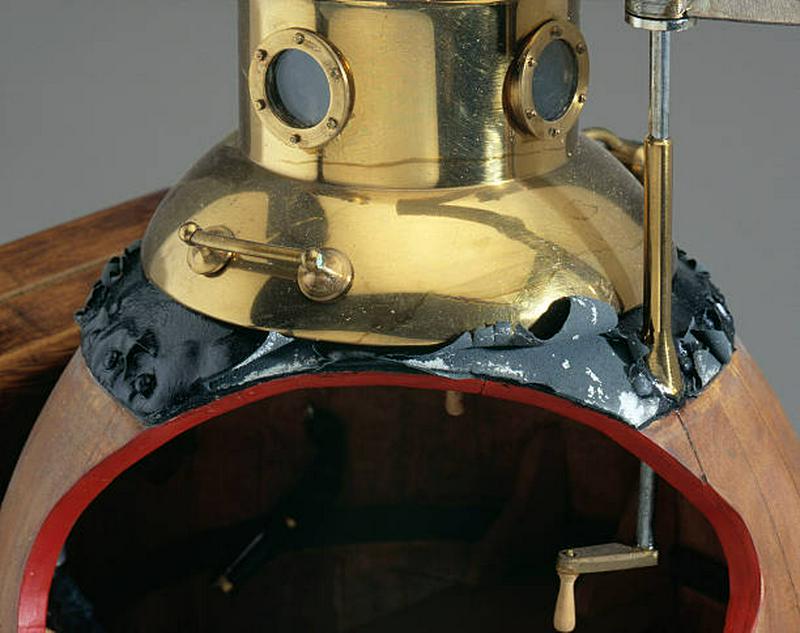The Submarine That Was Used In The Revolutionary War
By Linda Speckhals | November 29, 2022
Under The Sea

The U.S. Navy got its first modern submarine on April 11, 1900. The machine, which used gasoline while on the surface and electricity while underwater, was designed by Irish immigrant John P. Holland. This vessel, the Holland, was used in World War I, along with other vessels inspired by the it.
Cornelis Drebbel Designed A Submarine in the early Seventeenth Century
The Holland was not the first underwater boat to be built, and proposals for them were advanced as far back at the late 1500s. The Dutch inventor Cornelis Drebbel constructed and tested the first vessel in the early seventeenth century. Several inventors continued to work on the design over the next two centuries.
Bushnell Designed Underwater Explosives
During the American Revolution, David Bushnell, an American inventor, created a method for detonating underwater explosives in 1775. In April 1775, he started to work on construction of a a small submersible which was designed to attach an explosive to an enemy ship’s hull. While not much is known about what inspired Bushnell, he seems to have known about Drebbel’s earlier work, and some of the innovations in the Turtle were derived from the designs that were developed after Drebbel’s work.
Isaac Doolittle Completed Much Of The Construction

While Bushnell is credited with the overall design of the Turtle, its construction was mainly completed by Isaac Doolittle, a New Haven clockmaker, silversmith, engraver, brass manufacturer, and inventor. In addition to his work on the Turtle, Doolittle also built a gunpowder factory to help support the war effort. Based on Doolittle’s knowledge and experience, it appears that Doolittle designed and crafted the propulsion system, the navigation instruments, the depth gauge and compass, the brass crown hatch, the clockwork detonator for the mine, and other moving parts of the Turtle.
It Looked Like A Turtle
The Turtle’s propeller was the first one of its type known to be used on a watercraft. Dr. Benjamin Gale, who taught at Yale, described it as “a pair of oars fixed like the two opposite arms of a windmill.” It was most likely made of brass and designed and forged by Doolittle. The hull, which was made of oak, was constructed similarly to a barrel, held together with wrought-iron hoops. The shape of the hull, which resembled a clam or two shells of a turtle joined together, hence its name.
Getting It To Move
To dive, the vessel allowed water into a bilge tank, and then to ascend, a hand pump was used to push the water back out. The Turtle also carried 200 pounds of lead; it could be quickly released to increase buoyancy. The Turtle was operated by one person, who propelled it vertically and horizontally using hand-cranked and pedal-powered propellers; it was able to move at a speed of three miles per hour. The solo operator had to have great stamina to operate the machine. There was enough air inside to last a half-hour; after the half-hour, the Turtle needed to resurface and replenish the interior air using a ventilator.
Bringing In Light

An underwater vessel requires light of course, and the Turtle had six small pieces of glass at the top to let in natural light. To illuminate the needles on the controls, the Turtle used bioluminescent foxfire. This, however, failed in low temperatures, and so the Turtle was not used in the winter.
Preparing To Attack
Because of the need for secrecy, there are not many records concerning the Turtle, and the ones that do exist don’t reveal a lot. Once it was ready to go, they had to find a volunteer to operate it. They chose three men and took it to Long Island Sound to complete further trials and to train the volunteers. As they were completing the trials, the British gained control of Long Island Sound during the Battle of Long Island, and so the Turtle had to be moved over land to the Hudson River. They trained for two weeks, after which the operator, Sgt. Ezra Lee was ready to attack the HMS Eagle.
The Failed Attack
Lee planned to attack the Eagle on September 6, 1776, surfacing behind the ship’s rudder and attaching an explosive to the hull using a screw. He would then descend and make his getaway. The current and the creeping darkness made the already difficult process worse. Lee only had 20 minutes of air when he started to mission, and he struggled to attach the explosive device to the ship. He abandoned the operation after several attempts.
The Original Was Lost To History
Lee had already lit the explosive charge before he abandoned his mission, and he allowed it to drift. It ended up in the East River, where it exploded. On October 5, Lee again attempted to attach a charge to a frigate, but he abandoned the attempt once the ship’s watch spotted him. The submarine was sunk days later, and Bushnell reported salvaging it. However, its fate is unknown, but it may have been destroyed so that it didn’t fall into British hands when the British took New York. Though the original may be gone, a number of replicas of this first modern submarine have since been created.